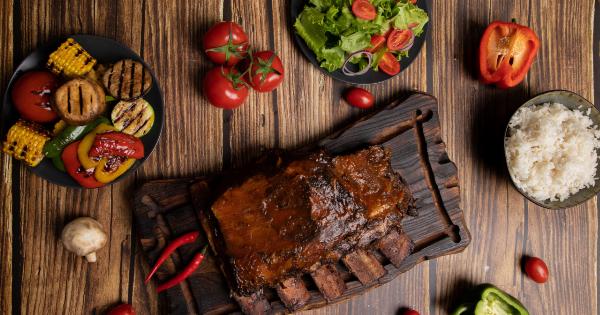Tomatoes are undeniably one of the most popular vegetables around the globe. However, it is not uncommon to come across tasteless tomatoes that are far from the succulent variety.
When it comes to fresh produce, the time and origin of purchase play a crucial role in determining the flavor and taste of the fruit. In this article, we will explore at what point do tomatoes lose their flavor so that you can make an informed decision the next time you go out looking for tomatoes.
Factors That Impact the Flavor of Tomatoes
The flavor of tomatoes is affected by a number of factors that can differ depending on a host of elements such as the geographical location, weather conditions, and type of tomato variety.
Some of the main factors that impact the flavor of tomatoes include:.
1. Maturity
One of the primary factors impacting the flavor of tomatoes is the stage of maturity at which they are picked.
A tomato that is allowed to ripen naturally on the vine is likely to be more flavorful than one picked prematurely and allowed to ripen artificially, such as in a warehouse or store shelf. Vine-ripened tomatoes generally have a much richer and more intense flavor than tomatoes that are picked unripe and treated with ethylene gas, which is used to promote ripening.
2. Soil
The quality of soil in which the tomato was grown also plays a vital role in determining the flavor of the tomatoes. Soil conditions such as pH levels, nutrient levels, and the presence of heavy metals can affect the flavor of the tomato.
Tomatoes grown in fertile soil that is rich in organic matter are more likely to have a richer flavor than those grown in low-quality soil.
3. Climate
The climate in which the tomato was grown also affects the taste of the fruit. Tomatoes grown in hot, dry climates tend to be sweeter and more flavorful than those grown in cooler and humid climates.
Tomatoes that are exposed to multiple temperature extremes, such as those that experience sudden heat waves followed by cold snaps, can also have a less desirable flavor.
4. Variety
Tomatoes come in a large variety of shapes, colors, and sizes, and each has a unique flavor profile.
Generally, heirloom varieties tend to have richer and more intense flavors than hybrid varieties that were developed specifically for their disease resistance or yield. Additionally, some cultivars may be more resistant to pests or diseases, making them less prone to flavor-altering issues caused by infestations or damage.
At What Point Do Tomatoes Lose Their Flavor?
Now that we have explored the factors that impact the flavor of tomatoes let’s discuss the point at which tomatoes lose their flavor. The flavor of tomatoes starts to decline immediately after they are picked.
However, the rate at which the flavor deteriorates depends on a host of factors.
1. Cold Storage
If you purchase a tomato that has been stored in a refrigerator or cold storage, it is likely to have less flavor than one that has been stored at room temperature.
This is because the cold temperature affects the enzymes and other compounds that contribute to the tomato’s flavor, altering their chemical composition and ultimately leading to a less desirable taste.
2. Length of Time from Harvest to Consumption
The length of time between harvesting and consuming a tomato also affects its flavor. As soon as a tomato is picked from the vine, it begins to break down, releasing enzymes and other compounds that contribute to flavor.
The longer the time between harvesting and consumption, the more these compounds break down, resulting in a less flavorful tomato.
3. Handling
The way in which tomatoes are handled after they are harvested can also affect their flavor. If they are roughly handled during transport or storage, they may become bruised or damaged, leading to the breakdown of flavor compounds.
Similarly, tomatoes that are exposed to light or overexposed to heat may also lose flavor faster than those that are protected from these elements.
Conclusion
Tomatoes are an incredibly versatile and delicious fruit, but they do have a limited window in which they are at their peak flavor.
A number of factors including the stage of maturity, soil quality, climate, and variety all play a role in determining the flavor of tomatoes. Once a tomato is picked, its flavor starts to decline, and the rate at which it does so depends on factors such as storage and handling methods.
By understanding these factors, you can make informed decisions when purchasing tomatoes to ensure that you get the most flavorful fruit possible.































